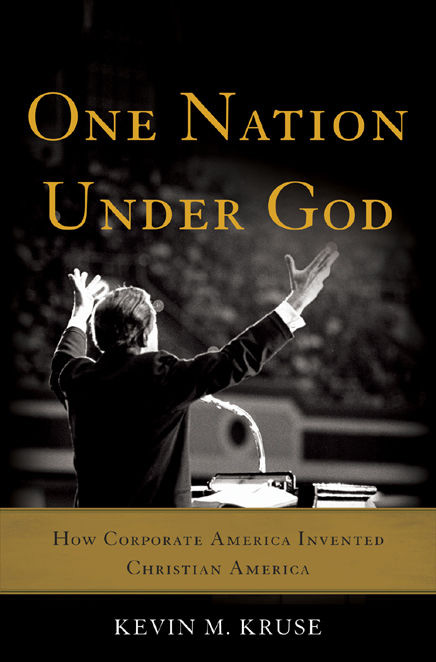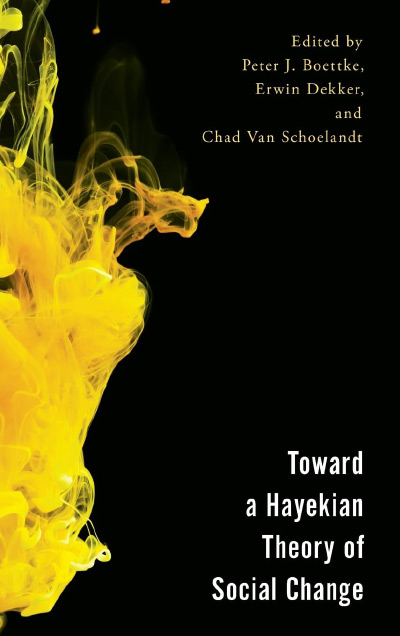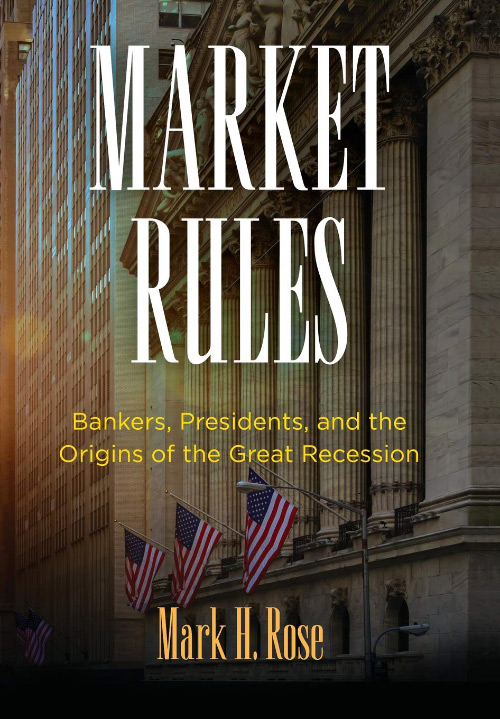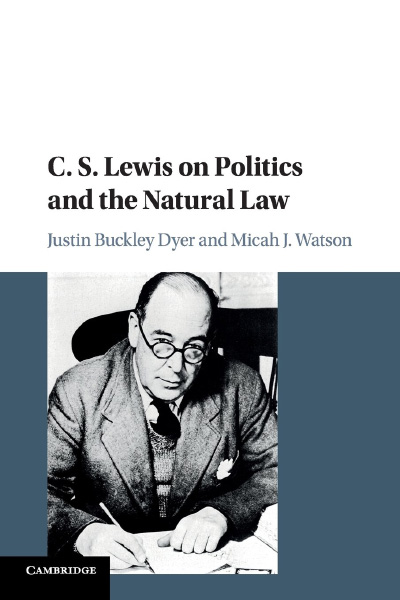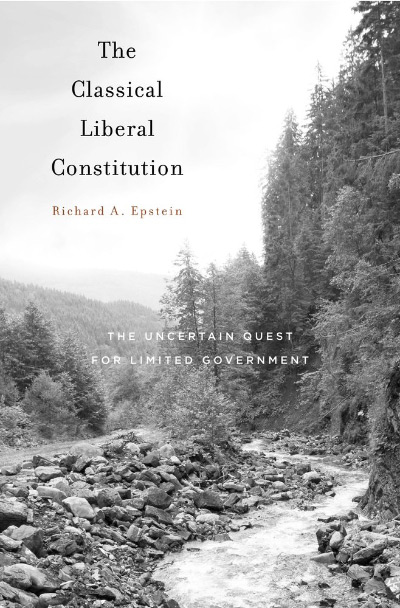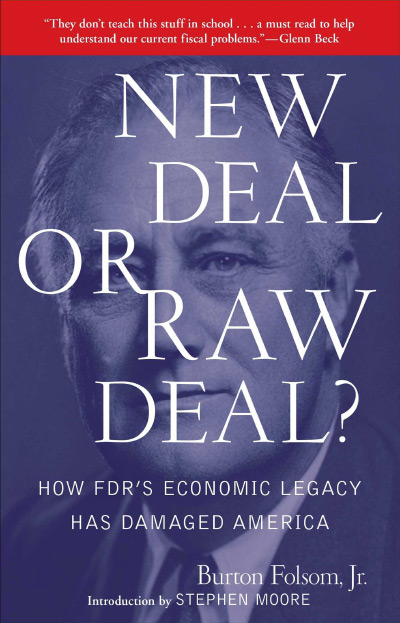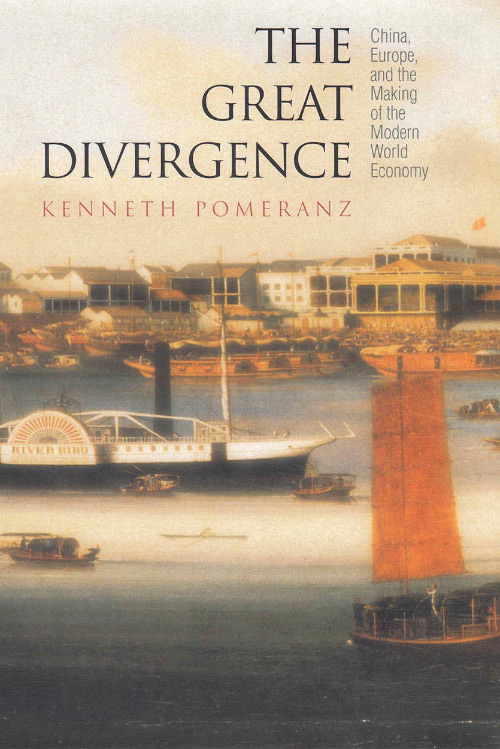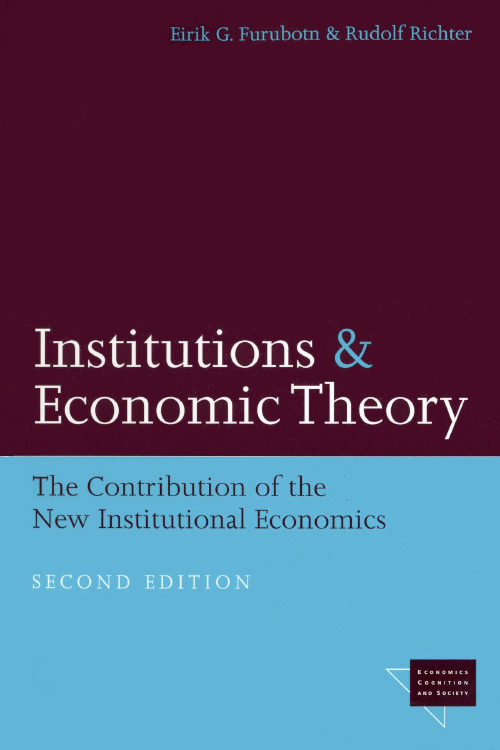The field of twentieth century American history has always exhibited strong political sympathies for the New Deal. While recent empirical assessment has cast doubt upon the attribution of economic recovery to these policies, it has done little to dampen historians’ enthusiasm for the same, or even shake them from causal explanations for the Depression era that most economists have explicitly rejected since at least the mid-century mark. (See, for example, Harold L. Cole and Lee E. Ohanian. New Deal policies and the Persistence of the Great Depression: A General Equilibrium Analysis. Journal of Political Economy 112, no. 4 [2004]: 779-816; and Thomas F. Cargill and Thomas Mayer. The Great Depression and History Textbooks. The History Teacher 31, no. 4 [1998]: 441-458.) Most peculiar is the growing chorus of historians who answer challenges to the New Deal, past and present, by attributing the criticism itself to underhanded conspiratorial designs. The result is an emerging historiographical camp that interprets perfectly mundane conservative, libertarian, and most of all free-market political advocacy as products of collusive intrigue rather than sincere intellectual disagreement. Having cast these actions as the coordinated products of “big business” and economic self-interest at the public’s expense, these scholars then dismiss positions that chafe with their own political priors without having to engage the substance of their opponents’ arguments.
Several recent works reveal how this breed of mundane conspiracizing veers into tendentious and sloppy forms of historical scholarship. Lawrence Glickman’s book Free Enterprise: An American History (New Haven: Yale University Press, 2019) brushes aside its titular concept’s ubiquitous Cold War deployment as a conceptual foil to the Soviet Union, presenting it instead as a maliciously cultivated mythology to damage and undo the New Deal order by misrepresenting it as an aberration from American economic development. Kim Phillips-Fein’s Invisible Hands (New York: W.W. Norton, 2010) similarly attributes a postwar resurgence in free market philosophy to the machinations of powerful anti-New Deal business interests, simultaneously discounting the substantive intellectual dimensions of this movement and inflating the influence of its purported laissez-faire designs upon modern policymakers. Nancy MacLean’s Democracy in Chains (New York: Viking, 2017) embraces conspiratorial epistemology outright, badly misinterpreting abstract academic treatises on constitutional design from the public choice subfield of economics as a secretive libertarian blueprint to undermine “democratic” governance (a term she uses in a way that is functionally indistinguishable from her own personal political beliefs) and replace it with an oligarchy of wealthy plutocrats.
The formula for identifying the mundane free-market conspiracy is almost always the same. An author with pronounced ideological sympathy for the New Deal will seize upon a common theme of American political discourse and recast unremarkable expressions of it as a coordinated and malevolent design to overturn Franklin Delano Roosevelt’s legislative accomplishments. To these same authors, the beneficence of the New Deal itself is axiomatically accepted as an unassailable and permanent expression of progressive popular will, thus the very act of scrutinizing it warrants a suspicion of motives.
Kevin M. Kruse’s One Nation under God offers yet another entry into the mundane conspiracy genre of recent historical writing on free-market thought. His own twist introduces a new religious angle to the subject, although with similar purposes. While the Eisenhower administration has long been associated with a surge of religiosity in American political discourse, conventional accounts tie this pattern to the Cold War and particularly its contrast with “godless” communism. Kruse posits an alternative thesis wherein political depictions of the United States as a “Christian nation” emerged primarily as another front in the businessmen’s war upon the New Deal order. Public manifestations of Christianity thereby served as something of a moralizing cover for economic motives.
Per this telling, the 1950s surge in religiosity served to cultivate a national mythology that the United States is, and had always been, “one nation under God,” as a 1954 addition to the Pledge of Allegiance proclaimed. In Kruse’s mind, the construction of a national religious mythology serviced a political objective of reframing the New Deal as an act of spiritual destruction by an overbearing government. He presents this mythology as a product of “Christian libertarians” such as Rev. James Fifield, who blended a philosophy of free-market individualism into their sermons in the 1930s and 40s. This religion-infused political philosophy attracted the aid of businessmen who opposed the taxation and regulatory progressivism of Roosevelt’s administration for what amounts, in Kruse’s telling, to self-interested secular reasons. With a Christian revivalist movement that peaked around the mid-century mark and burst into the mainstream through better-known voices such as Rev. Billy Graham, such messages became a constructed part of the American political discourse.
A slight twist to this plot occurred in the Eisenhower administration, however, in part because the president himself allegedly broadened the religious message of the “Christian libertarians” beyond their business-servicing political goals and into a general Christian ethos. While the resulting “ideology of ‘Freedom under God’ did not topple the regulatory state as [its creators] hoped,” it “convinced a wide range of Americans that their country had been, and should always be, a Christian nation” (p. 293). Large segments of the population have “believed [this ethos] ever since,” Kruse grouses (p. xiii). Thus a second surge of religiosity associated with Ronald Reagan and, later, the evangelical wing of the Republican party traces its deep origins to mundane conspiracy against the New Deal. An unmistakable subtext indicates that the author faults these developments for his own discontent over setbacks to political progressivism in the present day.
As with most works in this genre, one gets the distinct impression that its author discounts any reason for opposition to the New Deal save those that he can attribute to blind ideology and economic interest. The “evidence” of the mundane conspiracy emerges from the very fact that Fifield’s Spiritual Mobilization network promoted the works of free-market thinkers such as Friedrich Hayek, Henry Hazlitt, Ludwig von Mises, Garet Garrett, and Rose Wilder Lane. The intellectual substance of their arguments need not be examined in any detail though when their dissemination can be casually chalked up to the business philanthropists who backed Fifield’s operations.
Turning to the Eisenhower administration, Kruse expands his argument by citing a close succession of dates that supposedly established the “Christian nation” ethos. Eisenhower adopted religious language in his speeches and radio addresses. Shortly after his inauguration he attended the first National Prayer Breakfast, setting a presidential precedent of association with the event. In 1954 Congress added the phrase “under God” to the Pledge of Allegiance. It similarly appended the motto “In God We Trust” to postage stamps and paper currency shortly thereafter. As Kruse’s many media appearances on the book indicate, he interprets this cluster of dates as a myth-busting revelation in which public religiosity becomes an imposition on our national discourse of surprisingly recent origin. Thus we arrive at a fuller expression of the argument indicated in the book’s subtitle: “Corporate America Invented Christian America.” It did so out of antipathy to the New Deal, and the effect is a largely false historical consciousness of public religiosity that the present-day political right, in turn, projects backward onto earlier times.
There are quite a few complications to Kruse’s narrative, including in his own text. As others have pointed out, religious symbolism of the sort invoked by Eisenhower had long been a staple of American political discourse. Abraham Lincoln, William Jennings Bryan, and even FDR layered their speeches with biblical allusions, as did progressive contemporaries of Eisenhower. (For more examples, see Brian Doherty, The Corporate Christian Conspiracy? Reason. December 2015.) The “Christian nation” motif was similarly well-established in American political discourse at the national level well before Kruse’s thesis suggests. Legal scholars have long debated the meaning of Justice David J. Brewer’s use of the phrase in an 1892 Supreme Court ruling, which Brewer later extended into a book-length treatise The United States: A Christian Nation. 1905. (The case is Church of the Holy Trinity v. United States, 143 U.S. 457 [1892]. For historical context, see Steven K. Green, Justice David Josiah Brewer and the Christian Nation Maxim. Albany Law Review 63 [1999]: 427.) The motif also became a subject of biting satire through the pen of Sinclair Lewis, whose titular character from Elmer Gantry (1927) uses his closing sermon to proclaim “the domination of the Christian church through all the land.” “We shall yet make these United States a moral nation,” he declares, only moments after lusting over a female congregant. And one of Lewis’s targets, evangelist Billy Sunday, blended overtly Christian religiosity with patriotic fervor to frame the American entry into World War I as a godly struggle against Kaiser Wilhelm and the forces of hell. Perhaps this midcentury “invention” was not so novel after all, let alone a particular domain of Christian libertarians and anti-New Deal businessmen.
A more revealing problem emerges in Kruse’s treatment of the national motto “In God We Trust,” which features prominently on his list of religious overtures that allegedly “revolutionized public life in America” during the Eisenhower years (p. xiii). As any coin collector will tell you, this phrase predates its 1956 introduction to printed currency by almost a century, having first been added to metal coins in 1864 during the Civil War. Kruse is certainly aware of this earlier origin and briefly recounts it in his chapter on the motto, only to completely sidestep its complications for an argument that places central emphasis upon the 1950s as its focal point for the creation of the “Christian nation” ethos.
The result is a deeply incomplete and misleading treatment of the phrase’s history. Kruse evinces no awareness that Congress specifically codified the motto in the Coinage Act of 1873, directing the Secretary of the Treasury to attach it to gold and silver coinage wherever practical. He similarly obscures a public rift in 1907 when Theodore Roosevelt commissioned Augustus Saint-Gaudens to redesign the gold $10 and $20 pieces, removing the motto from its face in the process. In a remarkable understatement, Kruse acknowledges in passing that “an outcry led to a quiet reversal of Roosevelt’s order” (p. 112). The incident provoked a heated public debate that flooded Washington with petitions from clergy and the general public, protesting its omission as a presidential slighting of the faithful. The “quiet reversal” actually required a highly publicized act of Congress, adopted in 1908 and mandating “that the motto ‘In God We Trust,’ heretofore inscribed on certain denominations of the gold and silver coins of the United States of America, shall hereafter be inscribed upon all such gold and silver coins of said denominations as heretofore." When Congress expanded this practice to paper currency in 1956 it certainly reflected the religiosity of the moment, however its timing had more to do with the opportunity afforded by a long-scheduled updating of the engraving plates that was set to commence in 1957.
A closer look at Kruse’s text reveals a likely reason for this haphazardly presented background. The single-page treatment is almost entirely dependent on a cursory reading and rephrasing of another source from the secondary literature. Kruse borrows his account from a 1956 article by New York Times reporter Elizabeth Fowler, citing the piece in a footnote as his lone source. (Elizabeth M. Fowler. In God We Trust. New York Times, July 28, 1956. Kruse’s footnote indicated the date of the piece, but neglects to credit Fowler as the author.) Indeed, several of his own passages appear to have been hastily cribbed from this earlier work.
Here, for example, is Kruse:
“Lincoln, aware that the gold supply supporting “greenbacks” was dwindling, joked that a more appropriate motto might be found in the words of the apostle Peter: “Silver and gold have I none, but such as I have give I thee.”” (p. 112)
And Fowler’s original:
“But it is reported that President Lincoln, mindful of the dwindling gold supply, said that a more appropriate motto for the greenbacks might be the remark of the Apostle Peter: “Silver and gold have I none, but such as I have, I give Thee.””
Kruse again:
“It soon appeared, on bronze 2¢ pieces, in 1864.” (p. 112)
And Fowler’s original:
“It first appeared on the bronze two-cent piece of 1864.”
Kruse again:
“In 1883 the motto was removed from the nickel and would not return for another fifty-five years.” (p. 112)
And Fowler’s original:
“In fact, in 1883 it was removed from the five-cent piece, not to reappear until 1938.”
These and other awkwardly close paraphrases of Fowler’s article fall far short of the scrupulous consideration one might reasonably expect from a serious scholarly work. Indeed, the entire treatment of the motto’s pre-1950s history carries the hallmarks of a hastily inserted afterthought that only receives passing mention once his argument is already established in the text. Kruse does not appear to have verified Fowler’s account against primary sources, and he even omits pertinent facts that she mentions, such as the above-noted Coinage Act of 1873. And nowhere does Kruse consider the countervailing implications of these events for his Eisenhower-centric thesis. Clear public manifestations of religiosity induced multiple successive political affirmations of the motto in the late nineteenth and early twentieth centuries, none of which trace their origins to politically-coordinated branding schemes involving libertarian philosophers and anti-New Deal businessmen. Rather, religiosity persists because it is salient with large segments of the public.
This resulting treatment is symptomatic of an unevenness to the book’s general evidentiary approach. Records that affirm the mundane conspiracy of its main thesis find heavy use, even if they amount to little more than newsletters and printed ephemera that make no effort to conceal their religiosity, their free-market and individualist economic perspectives, or the reasons for their criticism of the New Deal. Other scholars wishing to read and study such works may accordingly find value in the book as a roadmap to locating these publications, even as their contents carry no smoking guns. Meanwhile well-known historical events that run against the book’s thesis and disrupt its timeline are relegated to passing acknowledgement at most, then cast aside completely at the onset of the Eisenhower administration.
Kruse’s book will appeal to a readership that is already inclined to fault free-markets, big business, Christians, and/or libertarians for its political frustrations in the present day, be they real or imagined. As a scholarly work of history however, it is a missed opportunity.
| Other Independent Review articles by Phillip W. Magness | ||
| Spring 2025 | Economics in America: An Immigrant Economist Explores the Land of Inequality | |
| Fall 2023 | Radical Hope: A Teaching Manifesto | |
| Winter 2022/23 | The Hyperpoliticization of Higher Ed: Trends in Faculty Political Ideology, 1969–Present | |
| [View All (8)] | ||



